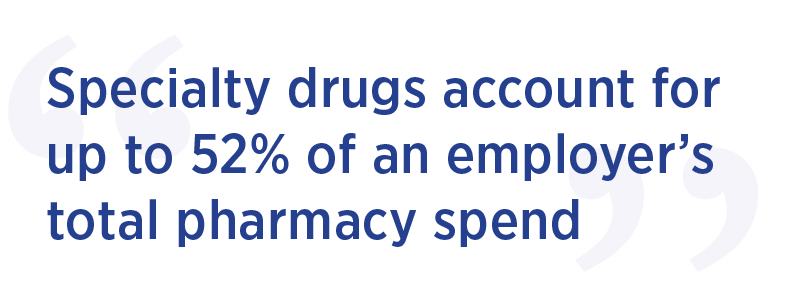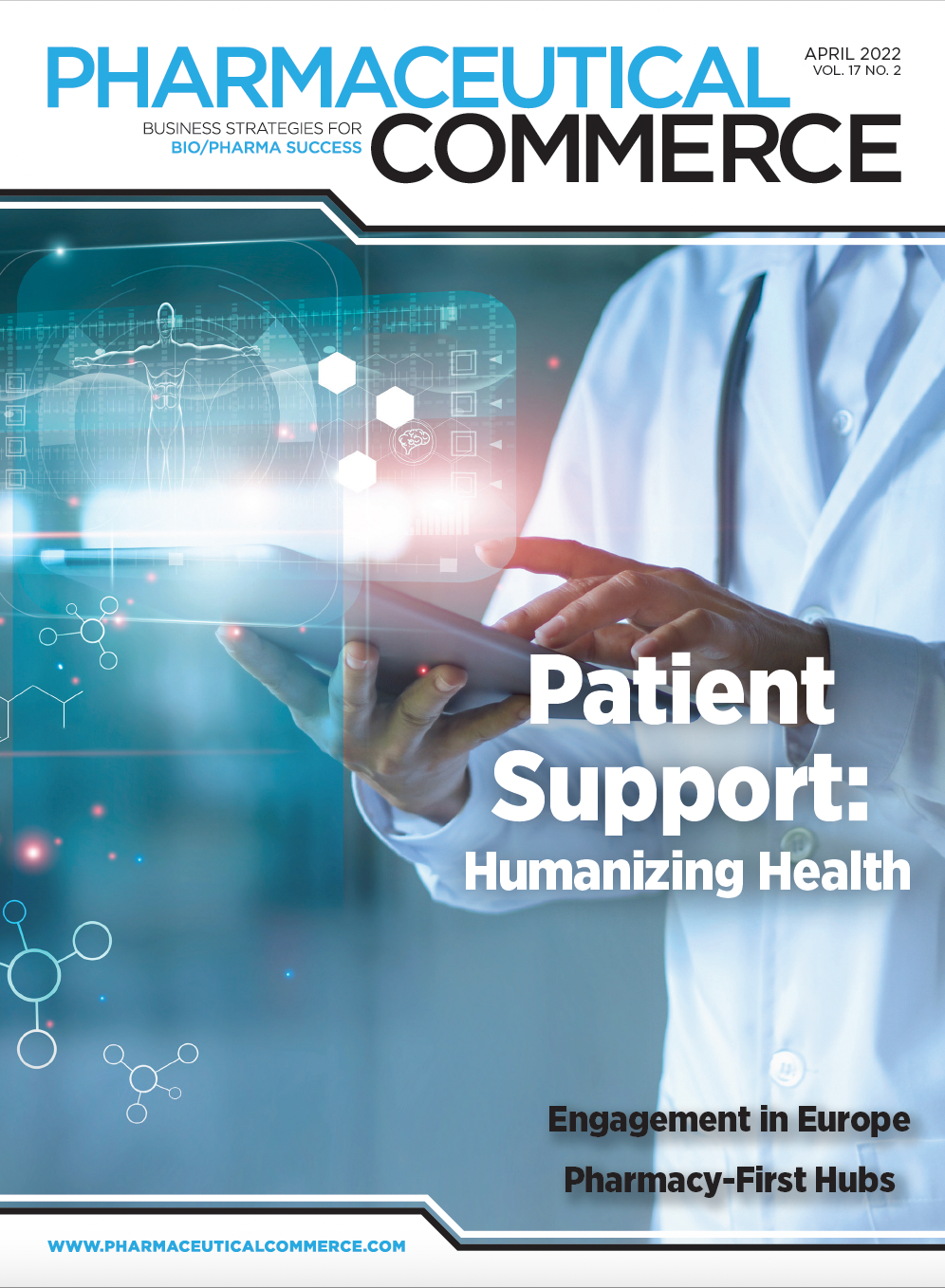Success with SP Solutions
The patient-first, pharmacy-first hub model optimizes outcomes and improves care journey for patients with rare disease
The 30 million Americans who live with a range of rare or orphan diseases usually manifest complex medical needs that require a high level of therapy adherence and support. Expanded, specialized services help these individuals to better address not only the challenges associated with specialty drug management, but also everyday lifestyle issues related to missing work, retiring early and foregoing income, and relying on unpaid family caregivers.
A patient-first care model can enable every stakeholder involved in the rare disease care continuum—patients, payers, providers, and manufacturers—to more effectively overcome problematic issues related to access, compliance, and adherence to treatment. These care strategies are often included in uniquely designed targeted programs, which engage the services of specialty-focused pharmacists and professionals with the experience and capabilities to mitigate costs and improve outcomes. This specialized expertise transcends the scope of competencies provided by traditional, legacy-care organizations, which are often designed exclusively for scale.
A specialty pharmacy (SP) solutions provider with a patient-first approach to rare disease management is imperative for deploying optimal solutions that offer interventions at key points in therapy to drive compliance and persistency, along with clinical outcomes tracking. Select organizations provide a boutique, consultative patient support/hub model that includes a dedicated, branded team. This is important for overcoming the limitations of the standard SP and hub service providers that often rely too heavily upon technology solutions that fail to address human needs and variability, as well as the need for customizations to fill specific manufacturer needs.
Impact of specialty drugs
Currently, specialty drugs account for up to 52% of an employer’s total pharmacy spend. In fact, specialty rare diseases have led to substantial direct and indirect economic burdens for the patient, unpaid family caregivers, and the US health system.1 In the US alone, the estimated total economic burden of 379 rare diseases with a prevalence of 15.5 million people in 2019 was $966 billion, including a direct medical cost of $418 billion and an additional $548 billion in indirect and non-medical cost. Because most individuals living with rare disease are between the ages of 18 and 65, commercial payers bear the largest share of medical cost, while employers pay for significant productivity losses associated with absenteeism and presenteeism.2

Benefits of patient-first approach
Patient-first, specialty-focused care teams typically include care coordinators, pharmacists, nurses, and other specialists, all focused on the disease state, patient community and therapy. They deliver customized care coordination and telehealth solutions as an added layer that fosters discussion between the patient, pharmacist, and other clinicians.
By incorporating assessments and interventions at key points in therapy, the care team is able to stay ahead of side effects and capture real-world evidence around the therapy, condition, and patient’s well-being. All of this critical data is then compiled for outcomes reporting.
A patient engagement strategy also takes a multi-layered approach that includes various channels, such as text, phone, and email. The strategy should be based on customer’s preferences and what generates the best response for each patient.
In a world of shrinking options and sophisticated technology, this approach offers something that has gone missing in the US healthcare system: the “human touch.” In fact, too often patients experience the retail pharmacy approach in which they are treated more as a daily quota, and not as someone facing an enormous life challenge. This is where specialty pharmacists can play a significant role for patients and caregivers. Specialized training and experience with high-cost, high-touch therapies for patients with chronic, complex, and/or rare diseases make them uniquely qualified to address the challenges associated with rare conditions. By providing an elevated level of customized care, they help caregivers to manage side effects and ensure that the patient “feels heard.”
Specialty-focused pharmacists are also a resource for information about custom financial solutions to address financial concerns and refer patients to copay assistance as applicable. When these professionals take a patient-first approach, they are able to cultivate a deeper relationship with patients and family caregivers, offering personalized information, care insights, and greater support that leads to improved outcomes and enhanced quality of life. In many cases, specialty-focused pharmacists serve as a knowledgeable, supportive resource, helping patients make the best possible decisions about their health care. When patients begin new medications, for example, the pharmacist can address any concerns they may have about side effects in a way that optimizes the therapeutic opportunity and helps the patient feel more comfortable remaining compliant, whether that means altering the prescription dose or getting a second opinion.
Key factors for success
Pharmaceutical manufacturers should look for partnerships with companies that offer a fully comprehensive suite of SP services, as well as a consultative approach that allows for true customization and flexibility. These options should not only include custom patient support and hub services, but also pre-commercialization, outsourced market access, wholesale, third-party logistics (3PL), and limited distribution drug (LDD) fulfillment, available as an end-to-end solution set or a la carte.
As standalone options or collectively, these services can act as an extension of the pharmaceutical company’s trade or market access team. Specialized outsourced market access solutions provide strategic payer expertise, utilization management, pull-through programs, and real-time data access. What’s more, these capabilities should span the entire product lifecycle and prescription process, streamlining communications between prescriber, patient, and pharmacy to eliminate barriers, decrease time-to-fill, enhance the patient journey, and optimize outcomes.
It’s important to align with a patient-first, pharmacy-first hub provider that serves as an industry partner—one that is backed by a team that has a thorough understanding of the payer mix and value. Ideally, the partner should offer:
- Deep bench experience and expertise in payer reimbursement and strategy development.
- In-depth understanding of the competitive environment.
- Programs designed to drive branded volume and provide data-driven cost savings analyses that result in optimal patient access to products in major specialty and rare disease categories.
- Customized clinical support and high-touch patient engagement to drive compliance and enhance outcomes.
Ultimately, a patient-first approach leads to a better understanding of the patient’s needs, focuses upon the impact of a particular drug or a combination of drugs, and monitors the patient’s overall health, resulting in an optimal patient journey and more favorable clinical outcomes.
About the Author

Dea Belazi is President and CEO of AscellaHealth.
References
1. The National Economic Burden of Rare Disease Study, February 2021 (everylifefoundation.org).
2. Ibid.
